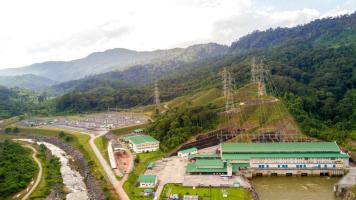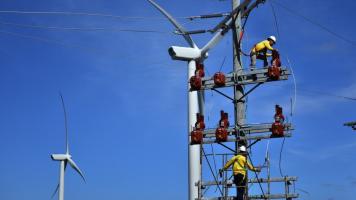Achieving the ASEAN Power Grid vision by 2045 is estimated to require $764 billion in generation and transmission investments. Photo credit: ADB.
A dedicated coordination mechanism will mobilize financing and provide technical support.
UPDATED, 16 October 2025
ADB, the World Bank, and ASEAN have established the ASEAN Power Grid Financing Initiative (APGF) to mobilize large-scale funding for cross-border power interconnections across land and on the seabed.
The two banks will offer financing from their own balance sheets and catalyze funds from other organizations to take projects from concept to completion.
Launched in Kuala Lumpur in October, APGF will help develop a strong pipeline of APG-related projects and enable ASEAN’s national utilities and sponsors to request project-specific support from a community of financiers, including international financial institutions, donors, commercial banks, and philanthropies.
The cost of interconnection
The 42nd ASEAN Ministers on Energy Meeting (AMEM) in October agreed that the APG should not only focus on regional cross-border connectors but also address the critical need for domestic grid network upgrades and the development of subsea power cables. The ASEAN Interconnection Masterplan Study (AIMS) III estimates that $764 billion in investments is required to build the transmission and power generation with high levels of variable renewable energy adoption.
Earlier, ASEAN ministers from the energy, economic, and finance sectors welcomed in August the proposal of ADB, World Bank, ASEAN Secretariat, and ASEAN Centre for Energy to lead the APGF. They will establish an APGF Working Group, which will serve as “the main platform for connecting utilities and project sponsors with financing partners.”
The APGF was developed at the request of ASEAN. Its goal is to mobilize financing and provide technical support through a dedicated coordination mechanism. The ASEAN Power Grid is a complex, long-term project that requires collaboration between countries, the private sector, financiers, and development partners.
At a virtual meeting on 14 August, the ASEAN ministers discussed financial mechanisms to accelerate power interconnections and multilateral energy trading. In a joint statement, the ministers said they envision the APGF as “a coordinating platform to support project and financing preparation, as well as blended capital mobilization to accelerate bankable cross-border land and subsea interconnection projects.”
They said ADB and the World Bank will support project preparation, capacity building, and “offer a range of financial instruments, including equity, grants, concessional and regular loans, guarantees, and political risk cover, along with advisory services on public–private partnerships.”
ADB has committed up to $10 billion for the ASEAN Power Grid over the next 10 years, supported by an initial $6 million of technical assistance funded by ADB, the United Kingdom, the European Union, and other partners. The World Bank is providing an initial contribution of $2.5 billion under the Accelerating Sustainable Energy Transition Program (ASET), including a $12.7 million seed grant to the ASEAN Centre for Energy to prepare bankable projects and define the next phase of support to the APG initiative.
Key to a resilient future
ASEAN is the world’s fourth largest energy consumer. Energy demand in the region is projected to triple by 2050. The ASEAN Power Grid is expected to enhance energy security and access to affordable electricity for the region’s 670 million people, narrow development gaps, drive and sustain economic growth, and strengthen resilience. It will enable ASEAN to accelerate its transition to a low-carbon economy through increased investments in renewable energy generation and integration.
ASEAN is pursuing grid interconnection and cross-border power trade by starting with bilateral and subregional initiatives. These include the Lao People’s Democratic Republic–Thailand–Malaysia–Singapore Power Integration Project (LTMS-PIP) and the Brunei–Indonesia–Malaysia–Philippines Power Integration Project (BIMP-PIP). In August, the ministers said priority interconnection projects should be guided by the needs and development priorities of ASEAN member states and the interconnection masterplan study to “ensure that support provided through the APGF delivers tangible and inclusive benefits across the region.”
An enhanced memorandum of understanding (MOU) to implement the ASEAN Power Grid is set to be signed this year. The current MOU ends in December. The terms of reference document for the Subsea Power Cable Development Framework is also slated for signing this year. Grid interconnection projects involving subsea cables, which are new to the region, require a specialized governance and operational framework.

BIMP-EAGA
The Brunei Darussalam–Indonesia–Malaysia–Philippines East ASEAN Growth Area, or BIMP-EAGA, is a cooperation initiative established in 1994 to spur development in remote and less developed areas in the four participating Southeast Asian countries.


